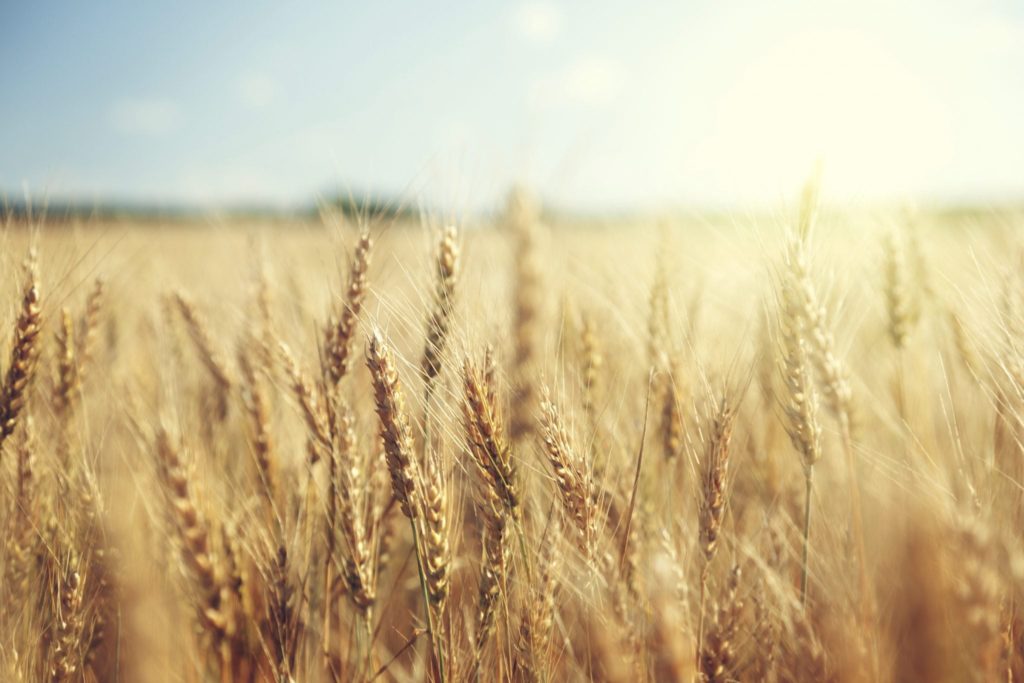What is the Big Deal About Wheat?

By Christie Kirchoff, RN, MS-HNFM
If you find yourself wondering about or perhaps even poking fun at people who claim to be gluten intolerant; you are not alone. In today’s world a healthy dose of skepticism is often necessary. It can be tough to tell if something is a real thing or just a way for some big business to make money. Most of what you will hear about wheat is that it contains Gluten. Gluten is a combination of two proteins: gliadin and glutenin. These proteins are found in a grain’s endosperm. The endosperm is the part of the grain which is ground to make flours. Gluten is found in wheat, barley rye and triticale and just about 1 in every 140 people have Celiac Disease which means that they cannot consume Gluten without triggering an autoimmune response. Many, many other people have a sensitivity to Gluten and even more to wheat in general.
No doubt there are a ton of companies out there pushing Gluten Free products nowadays; I particularly love when products like nuts or milk proudly display Gluten Free on their labels, REALLY??!! So, I get it, you are skeptical! Here are some facts for you to ponder from a bread, cereal, pasta loving nutrition professional.
The wheat we ate 50 years ago, is not the wheat we consume now. First, heavy, frequent and substantial breeding/ cross breeding/ genetic engineering of various wheat varieties to create hybrids has occurred. The kind of breeding is for qualities or attributes related to making a crop more profitable and not more nutritious. So now we have stubby little wheat plants that can survive drought, weeds, pests and can be harvested 2-3 times a year rather than “amber waves of grain”1. Some scientists attempt to downplay this “breeding” as a simple enhancement to what would have potentially occurred naturally; sure, perhaps over another 10,000 years. To speed this process up and to add/subtract varieties that would never have crossed paths, in addition to crude genetic modifications has created a product that we never would have come across naturally, and we have not had enough time to adjust to the forced changes. As if this was not bad enough news, Monsanto entered the wheat game in 2009. Need I say more….
In addition to being a completely different kind of wheat than anything we have eaten before, wheat is now processed very differently. Back in the day wheat was soaked, fermented and sprouted prior to baking and processing to make breads and cakes and pasta. Now the most commonly eaten form of wheat is flour. Flour is a highly refined product, and by refined I mean processed not superior in manners. Processed doesn’t even seem to fit what we really do to wheat; we bleach it, mill it, separate it and strip it of all nutrients until what we have is a sugar spiking carb capable of making anything gooier, chewier and taste better.
Perhaps the biggest component to all of this is the fact that we consume vastly larger amounts of wheat than we did in the past. Nearly every processed product has vital gluten added to it and has thereby radically increased consumption of gluten. “The past five decades have seen the rise of gluten as a commodity in its own right, through the largescale industrial separation of wheat starch from gluten, plus the controlled drying of the gluten so as to retain its functional properties. The resulting Vital Dry Gluten is most widely used in bakery products. However, gluten (vital, de-vital or modified) is finding increasing use as a food ingredient to provide a range of functional properties at a more modest price than competitors such as milk and soy proteins.”2
There is a big problem here, one that I hope you have figured out on your own. Of course people are experiencing greater levels of sensitivities to wheat. Will replacing wheat with tapioca, rice and corn fix this issue? Perhaps temporarily it will; until it becomes big business and we corrupt another food source in order to make it more profitable. So what can YOU do? For starters, let go of the idea that someone else is looking out for your health and wellbeing. Educate yourself about food additives and ingredient lists and read nutrition labeling before you buy. Seek out food products made by companies who do it for the love of food and not for sheer profit, they are easy to spot. Buy local and organic whenever possible. Ancient grains are always a good option, they can be found at almost every grocery store and online; Kamut, Quinoa and Buckwheat are my favorites, check the labels though.
- Ozkan H, Tuna M, Arumuganathan K. Nonadditive changes in genome size during allopolyploidization in the wheat (aegilops-triticum) group. J Hered. 2003;94(3):260-264.
- Day L, Augustin M, Batey I, Wrigley C. Wheat-gluten uses and industry needs. Trends Food Sci Technol. 2006;17(2):82-90.